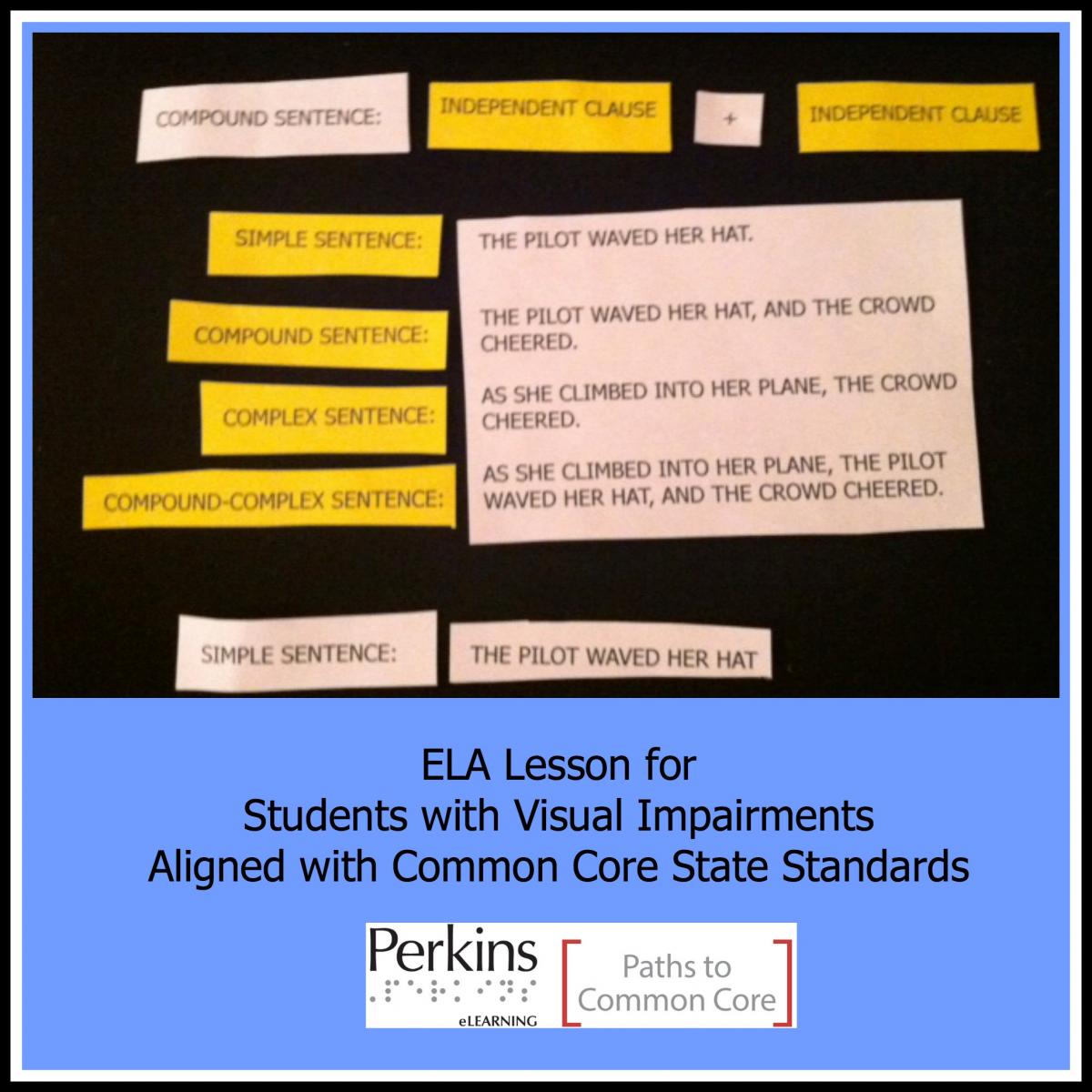Sentence Structure
Submitted by WendyPatrone on Jul 14, 2014
This lesson is based on classroom activities that I use with my textbook in my English Skills 10 class. (McDougal Littell’s Language Network)
- Students will determine the difference between an independent clause and a subordinate clause.
- Students will identify sentence structure by the number and kind of clauses it contains.
- Students will utilize coordinating conjunctions and conjunctive adverbs (as necessary) and will utilize proper punctuation.
Materials:
- Grammar reference book
- Textured or colored cardstock
- Brailler, iPad, note taker, or computer
- Braille labels
- Scissors
- Velcro or Magnets
- Flannel board/Magnetic board
-
Pieces of cardstock *labeled with the following:
- simple sentence (3)
- compound sentence (3)
- complex sentence (3)
- compound-complex sentence (3)
- independent clause (at least 6)
- subordinate clause (at least 2)
- plus (+) signs (at least 4)
- examples of independent and subordinate clauses (several of each that can be used together in sentences
*These can be large print, braille, or dual media.
Procedure:
- Explain the differences between simple, compound, complex, and compound-complex sentences to the students.
- Give students the cardstock (with Velcro or magnets on the back) labeled with the four types of sentence structure, the two types of clauses and the plus signs.
- Students use the labels to create “formulas” (or formulae) for each type of sentence on the flannel (or magnetic) board.
Examples:
- SIMPLE SENTENCE: INDEPENDENT CLAUSE
- COMPOUND SENTENCE: INDEPENDENT CLAUSE + INDEPENDENT CLAUSE
- COMPLEX SENTENCE: INDEPENDENT CLAUSE + SUBORDINATE CLAUSE
- COMPOUND-COMPLEX SENTENCE: INDEPENDENT CLAUSE + INDEPENDENT CLAUSE + SUBORDINATE CLAUSE
- Once the students master that task, give them a list of sentences (with mixed structure) on their flannel/magnetic board and have them label them.
- Next, provide students with *multiple labels showing the two types of clauses and have them construct their own sentences. (Be sure to provided them with some conjunctions, commas, semi-colons, etc. for building their sentences.)
*Make sure that the content of the clauses is related so it is easier to build their sentences.
- Once complete, students will write original simple, compound, complex, and compound-complex sentences.
Variations:
Different colors and textures of card stock can be used to help students be able to differentiate between the type of labels. If the student is a braille reader, I would suggest cutting the edges of the paper labels with scrapbook scissors to assist with distinguising between the types.

